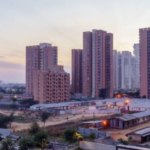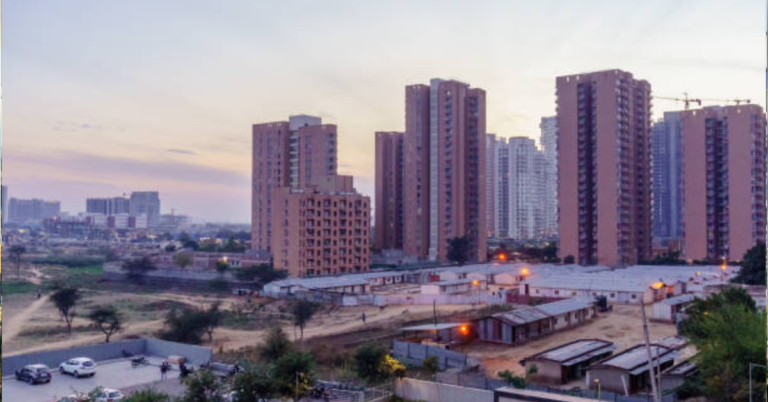In recent years, plastic furniture has emerged as a common feature in households across Pakistan. What was once considered a low-cost alternative for outdoor use or temporary settings has now transformed into a mainstream furniture option used in living rooms, kitchens, balconies, and even bedrooms. Its increasing popularity is not just a trend, but a reflection of the changing lifestyle preferences, economic considerations, and practical needs of the Pakistani middle class.
Top furniture shops prioritize sustainability, offering eco-friendly furniture made from responsibly sourced materials.
The Rise of Plastic Furniture: A New Trend
The trend toward plastic furniture in Pakistan is growing due to a variety of reasons. While traditional wood and metal furniture remain dominant in certain areas, plastic furniture has carved out a significant niche. People are increasingly drawn to the affordability, durability, and stylish options that plastic offers. In both urban and rural areas, plastic chairs, tables, cabinets, and stools are being purchased at an accelerating rate. As the local manufacturing industry continues to expand, more designs, colors, and types of plastic furniture are becoming available, catering to a diverse set of consumer needs.
Affordability and Accessibility
One of the primary reasons plastic furniture is becoming a household staple in Pakistan is its affordability. Wooden or metal furniture pieces often come with a hefty price tag, which makes them inaccessible to a large portion of the population. In contrast, plastic furniture is significantly more budget-friendly. This affordability does not compromise quality, especially with improvements in production techniques and the use of high-grade polymers.
Moreover, plastic furniture is readily available across Pakistan. From upscale furniture showrooms to local markets, and even in mobile vendor setups, plastic chairs and tables can be found everywhere. This level of accessibility means that families with varying income levels can enjoy the benefits of having comfortable, functional furniture without straining their budgets.
Lightweight and Easy to Handle
Another reason for the increasing use of plastic furniture in Pakistani homes is its lightweight nature. Traditional wooden furniture is heavy and difficult to move, especially for people who frequently relocate due to job transfers or rental agreements. Plastic furniture, on the other hand, is easy to carry, rearrange, and transport.
This ease of movement is especially valuable for small homes and apartments where space needs to be adjusted regularly for different purposes—whether it’s hosting guests or creating space for children to play. Plastic stools and folding chairs, in particular, have become essential items for such flexible living spaces.
Weather Resistance and Durability
In a country like Pakistan, where extreme weather conditions—ranging from scorching heat to heavy monsoons—are common, furniture durability is a major concern. Plastic furniture stands out due to its resistance to weather conditions. Unlike wooden furniture that can swell or crack and metal furniture that can rust, plastic remains largely unaffected by environmental factors.
This weather resistance makes plastic furniture an excellent choice for outdoor use. Many households in Pakistan use plastic chairs and tables in gardens, patios, rooftops, and balconies without worrying about damage. This has also increased the use of plastic furniture in public outdoor spaces like tea stalls, roadside cafes, and wedding venues.
Low Maintenance Requirements
Maintaining plastic furniture is a breeze compared to its wooden or metallic counterparts. There is no need for regular polishing, painting, or termite treatments. A simple wipe with a wet cloth is enough to clean most plastic items. For a country where daily dust and dirt are part of life, this ease of cleaning is a major advantage.
Furthermore, plastic furniture doesn’t require special cleaning agents, which means maintenance costs are minimal. This factor is particularly attractive to working families or elderly homeowners who prefer furniture that doesn’t demand high upkeep.
Variety in Designs and Colors
Gone are the days when plastic furniture was limited to basic white or beige chairs. Today’s plastic furniture comes in an array of vibrant colors, innovative designs, and sleek finishes that rival traditional furniture in appearance. Companies in Pakistan have started investing in modern production technologies to cater to aesthetic demands.
Consumers can now choose from a wide range of options to match the interior design of their homes. Whether it’s a minimalist coffee table, a designer chair, or a colorful cabinet, plastic furniture offers flexibility in design without compromising on cost or durability.
Note: plastic furniture in Pakistan offers sensibility and adaptability for an enormous number of purposes across home, business, and public settings.
Eco-Friendly Options on the Rise
With growing awareness about environmental concerns, many manufacturers in Pakistan are beginning to produce eco-friendly plastic furniture using recycled materials. While plastic pollution remains a global issue, using recycled plastic for furniture is one way to reduce environmental impact. These initiatives also appeal to the socially conscious segment of consumers who wish to make sustainable choices without sacrificing practicality.
Moreover, plastic furniture’s longevity contributes to reduced waste over time. Because it doesn’t wear out easily, households don’t need to replace it as frequently, thus reducing overall consumption.
Ideal for Rental Homes and Temporary Setups
In Pakistan, a significant portion of the population lives in rented homes or apartments. These households are often hesitant to invest in heavy and expensive furniture due to the temporary nature of their residence. Plastic furniture offers a perfect solution—it’s cost-effective, easy to move, and doesn’t require permanent installation.
This is especially true for young professionals, students, and newly married couples who are just starting out. Many of them opt for plastic furniture to furnish their homes quickly and affordably while still enjoying decent quality and design.
A Staple for Multi-Purpose Usage
Plastic furniture is incredibly versatile. Chairs can be used indoors and outdoors, stools can double as side tables, and plastic cabinets are useful in kitchens, bathrooms, or kids’ rooms. Their multipurpose nature adds significant value to Pakistani households, especially where space optimization is crucial.
Plastic items are also used extensively during events such as weddings, religious gatherings, or family functions. The fact that they are easy to store and stack makes them perfect for temporary or large gatherings. Event management companies and community halls across Pakistan rely heavily on plastic chairs and tables for this very reason.
The Role of Local Manufacturing Industry
Pakistan’s local plastic manufacturing industry has played a key role in popularizing plastic furniture. Brands like Boss, Decent Plastic, and Interwood’s plastic line have made high-quality plastic furniture available across the country. Local production keeps costs low and makes it easier for consumers to get replacement parts or warranty support.
These companies have not only ensured affordability but also continuously work on improving design and durability. Innovations like anti-slip legs, UV-resistant surfaces, and ergonomic designs have made plastic furniture a serious competitor in the furniture market.
Safe and Kid-Friendly
Families with small children often prefer plastic furniture due to safety concerns. Unlike wood or metal, plastic doesn’t have sharp edges or heavy frames that could cause injury. The lightweight nature of plastic also means that even if a piece falls, it is less likely to cause harm. For this reason, plastic tables, chairs, and toy storage units are very common in Pakistani nurseries and kids’ rooms.
Moreover, plastic is easy to clean, which is particularly useful when children are involved. Spills, stains, and messes can be dealt with quickly and without worry.
The Influence of Urbanization
Pakistan’s rapid urbanization has led to the growth of apartment living and smaller homes. These compact living spaces demand furniture that is functional, space-saving, and easy to move around. Plastic furniture fits perfectly into this new urban lifestyle. Its adaptability and compact design make it an essential component of modern Pakistani homes.
With the rise of housing societies, gated communities, and apartment complexes in cities like Lahore, Karachi, and Islamabad, the demand for practical and compact furniture is only increasing. Plastic furniture fulfills this requirement with ease.
A Smart Choice for Pakistani Consumers
In a country where inflation and economic uncertainty often influence buying decisions, plastic furniture presents a smart, value-for-money option. It allows people to furnish their homes attractively without going into debt. For many Pakistani families, investing in plastic furniture is both a necessity and a strategic decision.
The growing acceptance of plastic furniture is also a reflection of changing consumer attitudes. Functionality and affordability are now more important than ever. People are willing to embrace alternatives that offer good quality at a lower price, even if it means moving away from traditional norms.
Conclusion: A Furniture Revolution in the Making
Why plastic furniture is becoming a household staple in Pakistani homes is no longer a mystery. It’s the result of practical choices, economic realities, and evolving lifestyle preferences. Plastic furniture has proven itself to be more than just a temporary solution—it’s a permanent and reliable fixture in homes across the country.
From cost-effectiveness and durability to aesthetic appeal and environmental benefits, plastic furniture ticks all the boxes for the modern Pakistani consumer. As local manufacturers continue to innovate and respond to market needs, the future of plastic furniture in Pakistan looks bright. It’s not just a trend; it’s a transformation in how we live, furnish, and experience our homes.

















